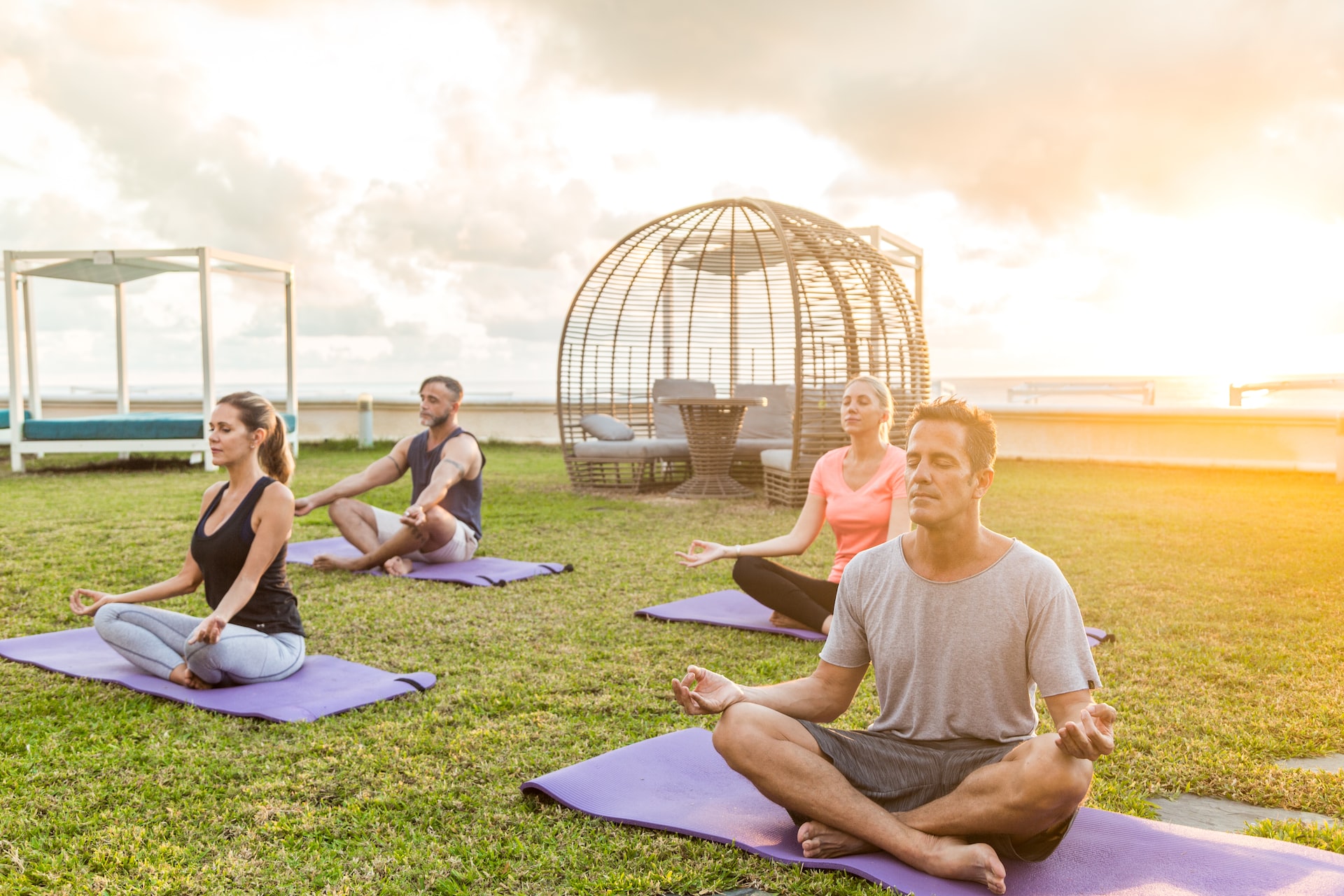Wellness • 02/21/2023
What Is Restorative Yoga?

Revivalist is a reader-supported endeavor and our posts may contain affiliate links. When you buy through links on our site, we may earn an affiliate commission.
Are you seeking the perfect rest-day activity that moves your muscles while helping them recover from your more vigorous workouts? Perhaps you want a gentle exercise to soothe your mind and body or a nurturing fitness program accessible for people with chronic pain. If any of these scenarios describe you, you might want to try restorative yoga.
What is restorative yoga? What makes this style different from other yoga forms, and why is it so vital to many? Here’s what you need to know before starting your yoga practice.
What Is Restorative Yoga? The Background and Basics
Restorative yoga became popular in the United States in the 1970s. Judith Laseter introduced the practice to the United States after studying under B.K.S. Iyengar, inventor of the Iyengar yoga form. The original primary focus was to assist patients in recovery from injury or illness. However, shalas today flood with students, some with chronic conditions and others who simply want to relax and find zen.
Restorative yoga differs from more vigorous forms like Ashtanga and vinyasa because it is much gentler and slower-paced. Some routines don’t require practitioners to stand up off their mats. It shares the most in common with Yin, although the principal difference lies in mindset. The goal of the Yin practitioner is finding stillness, whereas restorative yoga focuses primarily on healing — although you get a bit of both in each discipline.
This style is ideal for people who are just beginning their yoga journey and those with chronic illnesses. It’s also suitable for trauma recovery if the guide is trained in such techniques. If you regularly see a therapist, don’t be surprised if they recommend adding restorative yoga to your treatment protocol one day.
8 Tips for Starting Your Restorative Yoga Practice
Restorative yoga is highly individualized and, as such, is suitable for nearly anybody. However, the following eight tips will help you get the most out of your restorative yoga practice.
1. Arrive Early
You won’t get any brownie points with your guide for arriving early. However, you will have the chance to talk to the class instructor and get personalized recommendations. Please be sure to cover the following when you consult with your teacher:
- What inspired you to teach: You can often judge by their response if this guide is truly passionate about yoga or simply filling in a class spot at the gym.
- How can I best: If you have particular sore spots, medical conditions to work around or special requests, now is the time to ask.
- How hands-on are you: Some guides will lay hands on you to adjust your posture. If you have a trauma history and this triggers you, please speak up privately before class.
- How religious/into Hinduism or Buddhism are you: Not all yoga guides follow a traditional religion. Some are non-denominational, agnostic or atheist, although many adhere to Hindu or Buddhist ideals. However, you want to prepare yourself if you have a history of religious trauma or prefer a more secular experience.
2. Start With an Intention
Your intention is your aim or purpose for your practice in positive, spoken form. Some restorative yoga classes begin with the guide reciting an intention. Others give you a few minutes of silence where you can do this independently. A good example is, “I come to my mat to heal my body and mind.”
3. Give Yourself Permission
Giving yourself permission — to make mistakes, to leave uncomfortable poses early and to not attempt those you think may cause pain — is key to enjoying your restorative yoga practice. Otherwise, it can become yet another chore in your day instead of a pleasure.
This step is most crucial if you’re working with trauma. Your guide should never recreate negative, forceful scenarios where you feel obliged to try a pose you aren’t comfortable with to keep up with the class.
4. Master the Body Scan
Restorative yoga is all about recovering from illnesses and injuries. However, you can’t heal what you don’t feel.
You can become aware of all the tension your body holds by doing a body scan meditation. Your guide may lead you through this process, but it’s as easy as drawing your mindful awareness to each part, starting at your toes and working to your head.
5. Invest in the Right Tools
Restorative yoga advises the use of props. They can help you get into poses or hold them for longer periods with more comfort.
What do you need? Invest in the following beside a quality yoga mat:
- A set of blocks: Bamboo is good but hard. Softer numbers are more comfortable for long holds.
- A strap
- Blankets: You need at least one to relax in savasana at the end of class. Your body begins to cool once you cease movement. However, bringing a couple is okay if it enhances your practice.
- Pillows: Pillows are softer than blocks for holding poses.
6. Focus on Your Breath
Restorative yoga heals in part by activating your parasympathetic nervous system, the side of your autonomic nervous system responsible for your rest and digest functions. When you become sick or injured or experience long-term stress, mental illness or addiction, this system often weakens, making it difficult for you to relax, leading to muscle spasms or erratic behaviors.
You’ll activate your parasympathetic nervous system by regulating your breath as you hold poses. At first, you might notice that you tend to hold your breath, especially if you find a posture uncomfortable. Consciously breathing through the move trains your brain to activate the relaxation reflex even in the face of a stressor.
7. Slowly But Surely
Even though restorative yoga is slow and gentle, some postures can be challenging. It’s important to treat yourself with compassion.
Don’t expect to become a gummy bear by attending a few classes. Be patient with your progress and stretch only to the point of tightness, not pain. Use this time to consciously tune into each body part as you focus on it, adjusting your position to make the move most effective.
8. Create a Mood and Healing Atmosphere
If you find a shala, you’ll likely relax the moment you walk in the door. Gentle music plays while religious icons, flowers and candles adorn rooms fragrant with patchouli. However, you won’t get such an immersive experience at a typical gym.
However, there are still things you can do. Try spraying a bit of dilute aromatherapy spray on your mat — lavender is a lovely scent that may help you to relax. Consider investing in a small towel or blindfold to place over your eyes to cut harsh overhead fluorescents your guide may not be able to dim if you practice at a gym.
You might feel more comfortable practicing at home. If so, light your space with candles or incense and put some calming music or solfeggio tones in the background. Dim the lights and create a sanctuary, then search for restorative yoga on YouTube to start your journey.
What Is Restorative Yoga?
What is restorative yoga? Is this healing practice missing from your life?
Now that you know what restorative yoga is, why not give it a try? You have nothing to lose and everything to gain in better health.
Subscribe to Our Weekly Newsletter
We would love to connect deeper with you!


